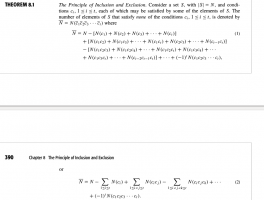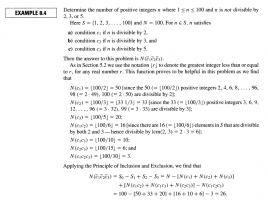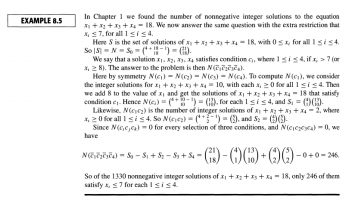Hello.
Six dogs and two cats have four hiding places to shelter from the rain. How can they
distribute the eight animals in the four hiding places, knowing that all the hiding places will be used and
also can not have dogs or cats in the same hiding place?
I can't say it in a way that I think will work, reading it comes to mind counting functions, the inclusion-exclusion principle, or dealing the red balls first and then the blue ones and using the product rule, but i don't think it works like that. So when I say the principle of inclusion-exclusion, it's because I think that having all the ways to fix all 8 balls, regardless of whether they stay in the same box, then the ones that are together could be eliminated, but that's the problem.
Six dogs and two cats have four hiding places to shelter from the rain. How can they
distribute the eight animals in the four hiding places, knowing that all the hiding places will be used and
also can not have dogs or cats in the same hiding place?
I can't say it in a way that I think will work, reading it comes to mind counting functions, the inclusion-exclusion principle, or dealing the red balls first and then the blue ones and using the product rule, but i don't think it works like that. So when I say the principle of inclusion-exclusion, it's because I think that having all the ways to fix all 8 balls, regardless of whether they stay in the same box, then the ones that are together could be eliminated, but that's the problem.



